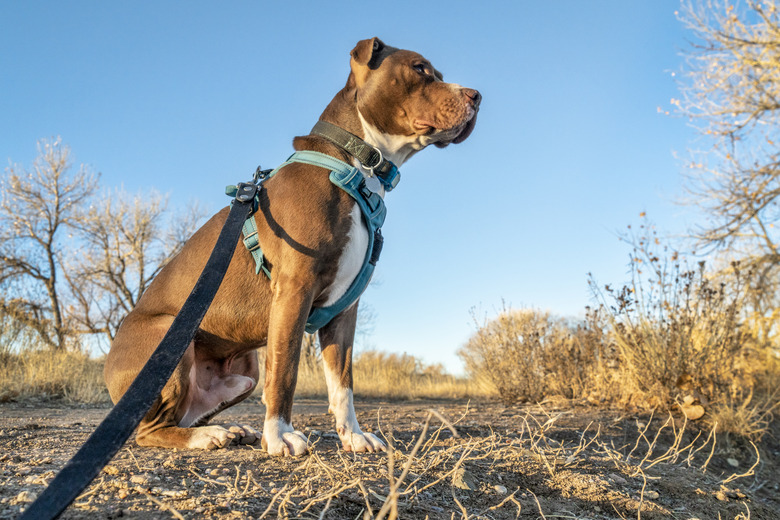How To Adjust A Dog Harness
When you walk your dog in a harness rather than attaching the leash to his collar, you put less pressure on your pup's neck. Knowing how to fit a dog harness correctly allows you to walk your dog safely and ensures your dog is comfortable.
Reasons to use a harness
Reasons to use a harness
There are several pros and cons to consider when deciding to switch to using a harness to walk your dog. For example, a harness provides less leverage than a collar and can make it more challenging to control a dog who pulls, especially if you have a large breed. Harnesses also take more time to put on and take off.
However, there are also benefits to consider as well. When properly fitted, your dog is less likely to slip out of a harness, and your dog is less likely to get tangled in the leash. Harnesses are also beneficial for dogs with medical conditions, like tracheal collapse and back pain, as the harness provides less pressure on the spine. If you aren't sure which option is best for you and your dog, consult with your veterinarian or dog trainer.
Types of dog harnesses
Types of dog harnesses
Selecting the right type of harness and knowing how to fit the dog harness correctly can make your daily walks more enjoyable and comfortable for you and your dog.
- Standard. A standard harness is one that goes on over your dog's head and has a clip on top of the harness on your dog's back.
- Step-in. A step-in harness is very similar to the standard but requires your dog to step into the harness rather than slipping it over her head. Both types of harnesses have straps that loop around the neck and around the ribs.
- Front-clip. If your dog pulls a lot, opt for a harness with a clip on the front for the leash. These may be designed in the same way as a standard harness with the exception of the clip location. Another common design is one that has a loop around the ribs with another strap that wraps around the chest.
Harnesses come in a variety of sizes. Measure your dog's girth and compare that to the size chart or the product label to make sure you are getting the size appropriate for your dog.
Put on a dog harness
Put on a dog harness
If you have a standard harness:
- Put the two loops over your dog's head, with the larger loop going on first.
- Once the smaller loop is settled around your dog's neck, lift one front leg and put it through the hole in the harness.
- Then, wrap the strap of the larger loop under your dog's ribs and secure the buckle.
If you have a step-in harness:
- Lay it flat on the ground and have your dog step her front legs into the two triangular leg holes.
- Pull up the harness and buckle the straps together to form loops around the neck and ribs.
How to fit a dog harness
How to fit a dog harness
Adjust the straps so that the harness fits correctly. Depending on how stiff the material is and how much you need to adjust, you may need to take off the harness to make adjustments.
- How tight should a dog harness be? You should check each strap of the harness and make sure you can fit two fingers between the strap and your dog's body. Check the harness to make sure you can't pull it off over your dog's head.
- Make the straps longer. The straps should have sliders on them that allow you to adjust the length of each strap. Each harness may have a slightly different design, but in general, to make the strap longer, move the slider toward the buckle.
- Make the straps shorter. To shorten the strap, move the slider away from the buckle. Be patient and make sure you get the fit just right.
Fit a front clip harness
Fit a front clip harness
Slip the harness over your dog's head so that the strap with the clip is against your dog's chest. Then, wrap the strap around your dog's ribs and secure the buckle. This type of harness doesn't always have leg holes. Move the slider to adjust the strap length to properly fit your dog. As with a standard harness, make sure you can fit two fingers between your dog's body and the harness.
